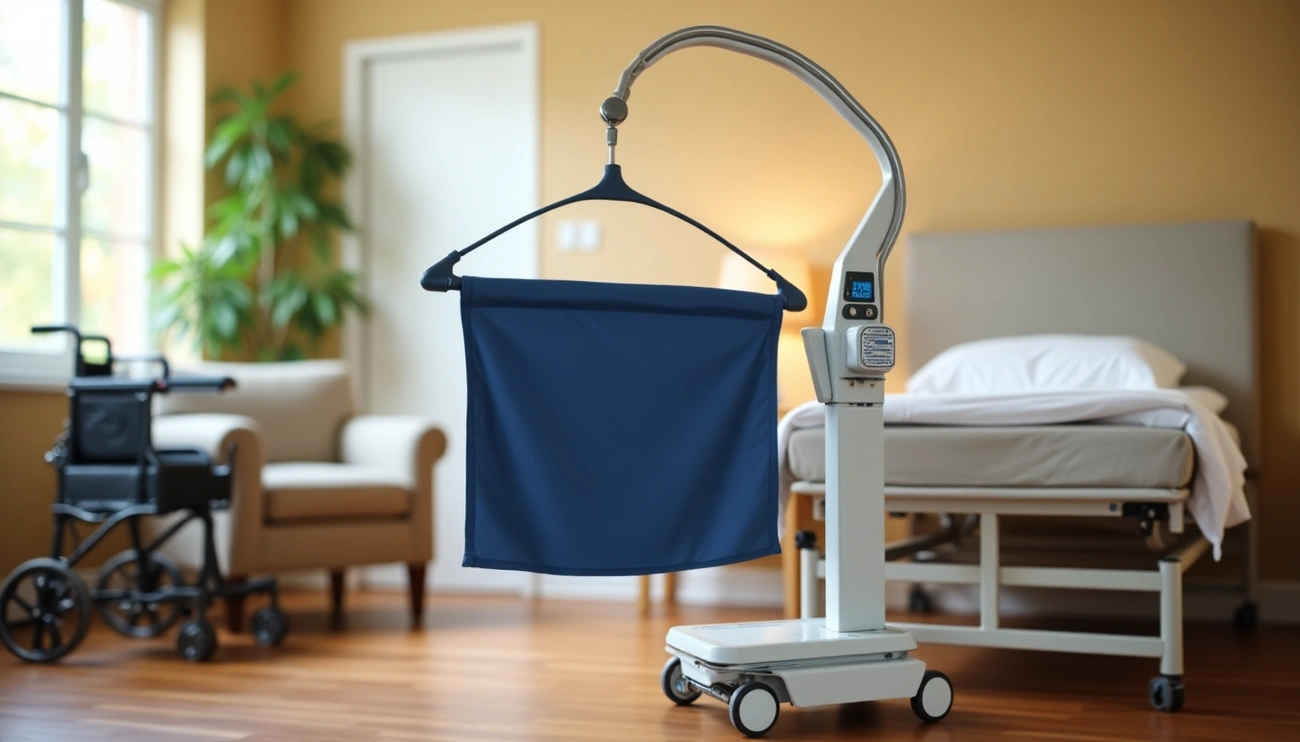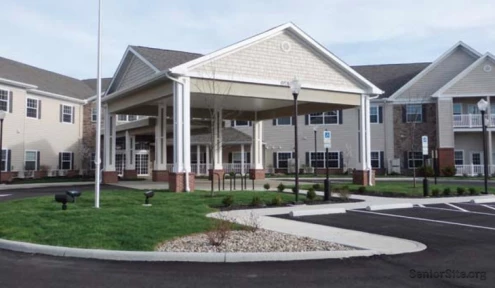Keep Parents Independent & Safe
Nearly all seniors want to stay in their homes for as long as possible. This desire for independence makes age in place home care a crucial consideration for families with aging loved ones.
As our parents grow older, finding the balance between respecting their autonomy and ensuring their safety becomes increasingly important. After all, independence is directly linked to self-worth and mental well-being. However, we must also recognize the signs that indicate our aging parents might need assistance – such as trouble managing medications, difficulty keeping up with housework, or feeling overwhelmed by everyday tasks.
The good news? Helping aging parents stay in their home offers significant benefits. Not only does aging in place help seniors maintain control over their lives, but it also allows them to remain close to family and friends. Additionally, this approach can save money compared to retirement homes while preserving familiar routines that provide comfort and stability.
In this guide, we’ll explore practical strategies to help your loved ones age safely at home. From assessing their needs to making home modifications, arranging support services, and handling important legal matters – we’ll cover everything you need to know to create a secure environment where your parents can maintain their independence with dignity.
Assessing Needs and Readiness to Age in Place
Recognizing when parents need help to age in place starts with careful observation. Before making any decisions about home care, it’s essential to assess both their needs and readiness for this significant life transition.
Look for early signs of decline
Being proactive means identifying subtle changes before they become serious problems. Many families wait too long, only taking action when major issues arise, such as repeated falls or medication mistakes. Instead, watch for these early warning signs:
- Changes in appearance – Suddenly unkempt appearance in previously tidy individuals may signal physical or cognitive difficulties
- Weight fluctuations – Unexplained weight loss could indicate nutrition problems, illness, medication side effects, or cognitive decline
- Mobility issues – Trouble getting up from chairs or navigating stairs increases fall risk
- Home disorganization – Unusual clutter, dirty laundry piling up, or neglected home maintenance
- Memory lapses – Forgetting appointments, asking repetitive questions, or increasing reliance on reminder notes
- Social withdrawal – Declining invitations or reduced interest in previously enjoyed activities
These signs don’t necessarily indicate dementia, as side effects from other medical conditions can present similarly. Therefore, professional medical evaluation is crucial when these patterns emerge.
Talk openly about goals and concerns
Approaching the conversation about aging in place requires sensitivity and compassion. Rather than imposing decisions, create opportunities for honest dialog:
“The best time for seniors to consider age in place options is well before a health crisis forces the issue,” notes research from MyLifeSite. Furthermore, involving your parents in decision-making is vital for maintaining their dignity and sense of control.
When initiating discussions:
- Frame conversations around preparation rather than limitations
- Ask about their preferences and priorities for the future
- Acknowledge their desire for independence while expressing your concerns
- Use specific examples when discussing challenges you’ve observed
- Present options rather than demands
Remember that most seniors – approximately 90% according to AARP research – want to age in their own homes. Consequently, respecting this wish while addressing safety concerns creates a foundation for productive planning.
Understanding both the physical and emotional aspects of aging in place helps families develop realistic plans that balance independence with necessary support.
Making the Home Safe and Accessible
Creating a safer environment is vital for successful aging in place. In fact, over half of all falls among seniors occur at home, making safety modifications essential for independent living.
Install grab bars and non-slip flooring
Bathroom safety starts with properly installed grab bars. These must be secured directly into wall studs or with proper anchoring devices to support body weight. Install horizontal bars 33-36 inches from the floor near toilets, and place them strategically in showers and tubs. When drilling into tile, use appropriate drill bits and avoid overtightening to prevent cracking.
Flooring choices significantly impact fall risk. Rubber flooring provides the best slip resistance, even when wet, plus shock absorption if falls occur. Cork offers similar benefits with natural cushioning and traction. For those preferring traditional options, low-pile carpet provides warmth and cushioning, while textured vinyl offers water resistance and stability for walker users.
Improve lighting and remove tripping hazards
Proper lighting reduces fall risk by 30% for older adults. Start by increasing bulb wattage where appropriate and adding fixtures in hallways, stairways and bathrooms. Install night lights along paths from bedrooms to bathrooms, and consider motion-activated lighting that eliminates the need to search for switches in the dark.
Remove common tripping hazards: secure loose rugs (or remove them entirely), repair loose floorboards, clear pathways of electrical cords, and immediately clean spilled liquids. Rearrange furniture to create wide pathways that accommodate mobility aids.
Use smart home devices for safety alerts
Smart technology enhances safety without replacing human connection. Smart smoke detectors can alert family members of potential dangers via smartphone notifications. Voice-activated assistants allow for controlling lights, thermostats, and other devices without physical effort.
Medical alert systems provide crucial emergency response when needed. These devices connect seniors with operators who can dispatch help, whether for serious emergencies or daily assistance needs. Many now offer fall detection capabilities that automatically alert emergency services if a fall is detected.
Planning for Care and Support Services
Even with a safe home environment, successful aging in place requires appropriate care and support services. Establishing a solid care foundation ensures your loved ones maintain independence while receiving necessary assistance.
Explore in-home care options
Professional home care services bridge the gap between independent living and nursing home care, offering support tailored to individual health requirements. Initially, consider whether you need skilled nursing care for medical needs or non-medical assistance with daily activities like hygiene, meals, and transportation.
Professional caregivers bring specialized training to handle emergencies and adjust care as needs evolve. Meanwhile, family caregivers often manage finances, scheduling, and care coordination. Many families find that combining both approaches works best, with professionals handling specialized tasks while family members provide familiar support.
Understand long-term care insurance
Long-term care insurance can make aging in place more financially feasible. Unlike health insurance, these policies can cover:
- Home modifications like ramps and shower handles
- Medical equipment not covered by health insurance
- Payment for family caregivers (informal care)
- Adult day programs for socialization
The best time to explore these options is before you need care. Policies vary greatly, so ensure yours covers in-home services rather than only facility care. Generally, you become eligible for benefits once you can no longer perform certain daily living activities.
Create a care schedule with family or professionals
A comprehensive care plan helps organize and prioritize caregiving activities. Start by listing all tasks needed for your loved one, then determine which require professional skills. Next, assign responsibilities between family members and professionals, creating a schedule that ensures continuous coverage.
Consider scheduling overlap times when both family and professional caregivers are present to ensure smooth transitions and communication. Digital platforms can help track medications, appointments, and daily notes. Moreover, update the care plan annually or whenever health conditions change.
Care plans should include critical information like health conditions, medications, dosages, provider contacts, and emergency information. These organized plans can reduce emergency room visits and hospitalizations while maintaining quality of life.
Managing Health, Finances, and Legal Matters
Maintaining independence at home requires organized approaches to both daily health needs and important legal matters. As aging parents navigate their later years, proper management of medications, appointments, and legal affairs becomes essential for their well-being and security.
Track medications and medical appointments
Studies show that 40% to 80% of medical information is forgotten immediately after a healthcare visit, with nearly half remembered incorrectly. To prevent medication errors, I recommend creating a comprehensive medication database including:
- Medication names and dosages
- Reasons for prescriptions and potential side effects
- Prescribing physicians and pharmacy information
- Refill schedules and special instructions
Pill organizers substantially reduce dosing errors, which rank among the most common medication mistakes older adults make. Coupled with reminder systems—whether smartphone apps, alarm clocks, or daily routines—these tools ensure medications are taken properly.
For medical appointments, transportation issues cause approximately 6 million Americans to miss healthcare visits annually. Scheduling follow-up appointments while still at the doctor’s office and maintaining a dedicated health notebook helps track important medical information. This approach allows you to record questions before visits and document answers during appointments.
Set up power of attorney and health directives
Legal preparation is equally important as physical home modifications. A healthcare power of attorney designates someone to make medical decisions if your parent becomes unable to communicate their wishes. Primarily, this ensures their healthcare preferences are honored even during incapacitation.
Financial powers of attorney grant authority to manage monetary affairs, helping prevent the need for court-appointed guardianship—a process that can be both costly and time-consuming. These documents can be structured to take effect immediately or only after incapacity (“springing” power).
Advance directives, including living wills, outline specific healthcare preferences for end-of-life situations. As a matter of fact, these documents provide clear guidance about life-sustaining treatments, pain management, and other critical decisions.
Ideally, these legal documents should be established while parents still have full decision-making capacity. Without proper legal planning, adult children often face complicated court proceedings to gain authority for helping their parents.
Conclusion
Conclusion
Helping our parents age in place represents one of the most meaningful ways we can honor their independence while ensuring their safety. Throughout this guide, we’ve explored how creating a comprehensive support system allows seniors to remain in familiar surroundings with dignity and autonomy.
Above all, successful aging in place requires proactive planning rather than reactive responses to crises. Early identification of changing needs, thoughtful home modifications, and appropriate support services form the foundation of this approach. Families who implement these strategies often find their loved ones maintain better physical and emotional health compared to those who relocate to institutional settings [53].
The financial benefits prove significant as well. Home-based care typically costs less than nursing facilities, especially when families combine professional services with personal involvement. Additionally, utilizing available resources like long-term care insurance can further reduce financial strain while maximizing support options.
Legal preparation stands equally important as physical accommodations. Without proper directives in place, families may face complicated court proceedings during health emergencies – precisely when quick decisions matter most. Therefore, addressing these matters while parents can actively participate ensures their wishes guide future care decisions.
Remember that aging in place isn’t about avoiding change but rather adapting thoughtfully to evolving needs. Small, strategic modifications often yield significant safety improvements without sacrificing the comfort and familiarity that make a house a home. Consequently, our parents can maintain their cherished independence while we gain peace of mind knowing they remain protected.
Finally, this journey requires patience, communication, and flexibility from everyone involved. Though challenges will arise, the rewards of helping our parents age with dignity in their chosen environment certainly outweigh the difficulties. After all, supporting their independence now honors the care they once provided us – completing a meaningful circle of family support that spans generations.
FAQs
Q1. What are the early signs that parents might need assistance to age in place? Early signs include changes in appearance, unexplained weight fluctuations, mobility issues, home disorganization, memory lapses, and social withdrawal. It’s important to observe these subtle changes before they become serious problems.
Q2. How can I make my parents’ home safer for aging in place? To enhance safety, install grab bars and non-slip flooring in bathrooms, improve lighting throughout the house, remove tripping hazards, and consider using smart home devices for safety alerts. These modifications can significantly reduce the risk of falls and accidents.
Q3. What types of care options are available for seniors aging in place? Care options include professional in-home care services for medical or non-medical needs, family caregivers for daily support, and a combination of both. Long-term care insurance can also help cover costs associated with home modifications and care services.
Q4. How can I help manage my parents’ health and medical appointments from a distance? Create a comprehensive medication database, use pill organizers and reminder systems, and maintain a dedicated health notebook to track appointments and important medical information. Consider using digital platforms to help coordinate care and communicate with other family members or caregivers.
Q5. What legal preparations are important for aging parents? Essential legal preparations include setting up a healthcare power of attorney, financial power of attorney, and advance directives like living wills. These documents ensure that your parents’ healthcare preferences and financial affairs are managed according to their wishes, even if they become unable to make decisions themselves.












